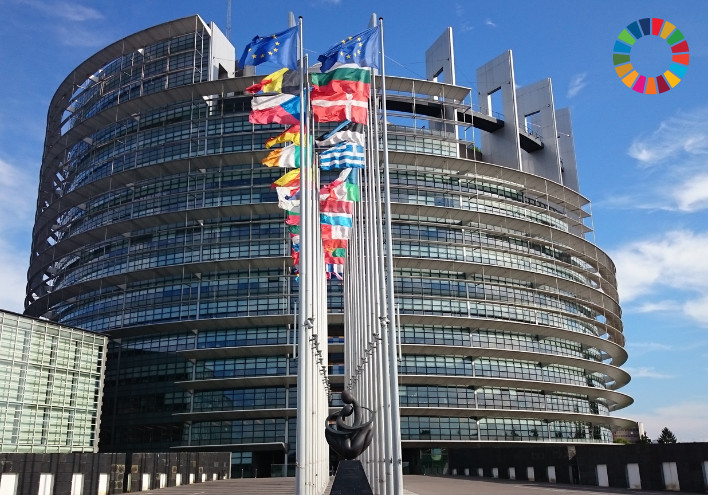EU Social Climate Fund: A Game-Changer?

ATD Fourth World’s advocacy at the European and international level encourages policy makers to recognize four core elements of social and environmental justice:
- People in poverty suffer most from climate change yet are least responsible for it.
- Policy measures should channel resources to disadvantaged areas and people.
- It is important to develop measures that do not inadvertently harm people in poverty.
- It is crucial to consider the impact of any measure on people in poverty before implementation.
Green Deal
A few years ago, the question of climate change entered the political agenda of the European Union and, as a result, the Green Deal was presented in 20191.
In 2021, the European Environment Agency (EEA) and Eurofound published a 14 pages briefing paper titled Exploring the social challenges of low-carbon energy policies in Europe.
Unfair to those in poverty
Inspired by the Green Deal, this briefing recognizes that the goal of climate policy cannot just be reducing greenhouse gas emissions. It must also be acknowledged that carbon and energy taxes can be unfair to those in poverty. In addition, climate solutions must include measures that create environmental and health benefits. This focus on health is critical. Pollution, toxic waste, inadequate housing, and other unsafe living conditions have severely damaged the health of people in poverty for years across Europe.
EU Social Climate Fund
Recently, the European Union (EU) integrated the Social Climate Fund initiative into its Fit for 55 Package2.This legislative package followed the adoption of the 2020 Climate Law, which sets the target of a carbon neutral Europe by 2050.
The Social Climate Fund provides EU Member States additional funding for building improvements, infrastructure development, sustainable mobility and direct income support to citizens. The purpose of this fund is to help citizen face the new “carbon emission trading”, a carbon tax dedicated to the building and transport sectors that will come into force in 2027. It aims at fighting against fossil energies by making them pay for the CO2 they emit. However this risks increasing the bills of the poorest housing, less isolated and heated via fossil energy.
Prioritize energy efficiency renovation
ATD Fourth World proposed amendments to the Social Climate Fund. This was done in order to guarantee that substantial funding prioritizes energy efficiency renovation of buildings where low income households live. ATD Fourth World also advocated for adequate, sustainable, and affordable transportation options.
The Social Climate Fund was adopted in March 2022 and will be operational in 2026. With around €86 billion3 invested over 8 years, the fund will specifically target vulnerable low income people and micro-enterprises that don’t have the means to adopt low carbon solutions themselves to bring down their growing energy expenses. The fund should support low income people, so that their homes can become energy efficient and to ensure they have access to affordable transportation. The fund will also have temporary direct income support mechanisms for people when needed.
Support programmes and measures
The EU’s Member States now have the responsibility to create support programmes and measures in line with the objectives of the Social Climate Fund (energy efficiency of buildings and transportation). Starting now members of civil society need to call on EU governments to spend Social Climate Fund money in a way that benefits the most vulnerable populations living in deepest poverty, so that everyone can have lower energy bills, better housing and improved transportation.
Although there are risks of funds not reaching those in poverty. This is a good example of pro-active thinking inspired by the Sustainable Development Goals. We need to mobilize to make sure that the people living in poverty will be reached.
ATD Fourth World’s EU advocacy team looks forward to working with ATD members and other citizens across Europe to advocate for climate justice at the European level. .
- A package of dozens of measures (that goes from renovation of building to healthy and affordable food) meant to ensure that, the European Union will reach climate neutrality by 2050 and that no one and no places will be left behind. The Green Deal is composed of the Fit for 55 package, the European climate law, the EU strategy on adaptation to climate change and other (Farm to fork strategy, etc.).
- The name of this packages comes from the goal that the European Union wants to reach (at least): 55% of reduction of net greenhouse gases by 2030.
- The funds will come from the ETS1 (until 2027) then from the ETS2 at 75% the rest will come from the countries themselves.

